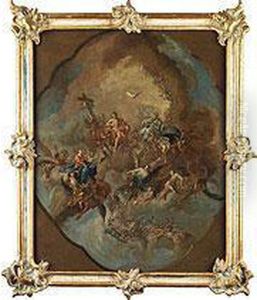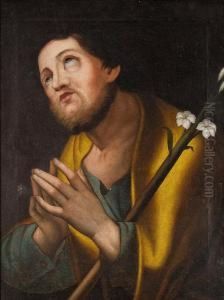Johann Jacob Stelzer Paintings
Johann Jacob Stelzer was an 18th-century German portrait painter whose life and work are somewhat obscure compared to his more widely recognized contemporaries. Born in 1699, Stelzer is primarily known for his portraits of the middle-class and nobility, which provide a glimpse into the cultural and social milieu of his time.
Stelzer’s training and early career are not thoroughly documented, but it is likely that he apprenticed with a local artist or attended an academy, as was typical for artists of his period. He may have traveled within Germany or to neighboring countries to study and work, which was also a common practice for artists seeking to expand their skills and reputation.
Throughout his career, Stelzer developed a style that reflected the influence of the Baroque period, with its emphasis on drama, rich coloration, and detailed depiction of fabrics and textures. His portraits are characterized by a certain formality and poise, a reflection of the conventions of portraiture at the time, which sought to convey the status and character of the sitter.
Despite the apparent quality of his work, Johann Jacob Stelzer did not achieve widespread fame, and as a result, details about his life, including significant patrons or membership in artistic societies, are sparse. He is known to have been active in the mid-1700s, a period in European art history that was marked by a transition from Baroque to Rococo styles and eventually to Neoclassicism.
Stelzer's death in 1775 marked the end of his contributions to the art world. His legacy is preserved in the portraits that remain, which continue to be studied by art historians and appreciated by collectors. Unfortunately, due to the limited information, Stelzer's work does not occupy a prominent place in art historical discourse, but it remains a valuable part of the cultural heritage of the era in which he lived and worked.

